Αφιερωμένο στα Κρητικόπουλα της Λεξιλογίας
και όλως ιδιαιτέρως στον αγαπητό μας Δαεμάνο
Από τις αναμνήσεις ενός ηλικιωμένου Βενετοκρητικού άρχοντα, του Τζουάνε Παπαδόπουλου, που έζησε τα μεγαλεία της βενετοκρατούμενης Κρήτης του 17ου αιώνα και τελείωσε τη ζωή του πρόσφυγας στην πόλη Παρέντσο της Ιστρίας, έχοντας καταφύγει εκεί μετά την άλωση του Χάνδακα το 1669.
...
Από το βιβλίο: Τζουάνες Παπαδόπουλος. Στον καιρό της σχόλης: αναμνήσεις από την Κρήτη του 17ου αιώνα. Εισαγωγή και σχολιασμός Alfred Vincent, μετάφραση Ναταλία Δεληγιαννάκη. Ηράκλειο: Πανεπιστημιακές Εκδόσεις Κρήτης, 2013.
Αφιερωμένο στους Κρητόφιλους της Λεξιλογίας
και όλως ιδιαιτέρως στον αγαπητό μας Εαρίωνα
και όλως ιδιαιτέρως στον αγαπητό μας Εαρίωνα
Το άρθρο ενός νεαρού Καναδού δημοσιογράφου, συγγραφέα και μουσικού, του Άνταμ Γκόλνερ, που έζησε τα μεγαλεία της κρισοκρατούμενης Κρήτης του 21ου αιώνα —καλεσμένος ενός παλιού Στειακού φίλου, του Γιάννη Οικονόμου— και συνέχισε τη ζωή του στο Μόντρεαλ, έχοντας καταφύγει εκεί μετά την άλωσή του από την Κρήτη το φθινόπωρο του 2012.
Night was falling on the road from Heraklion to Ierapetra. Outside the car window, rocky moonscapes drifted by. Mountain goats ambled through the hollowing twilight. White villages stood perched on the hillsides like distant flocks of sheep.
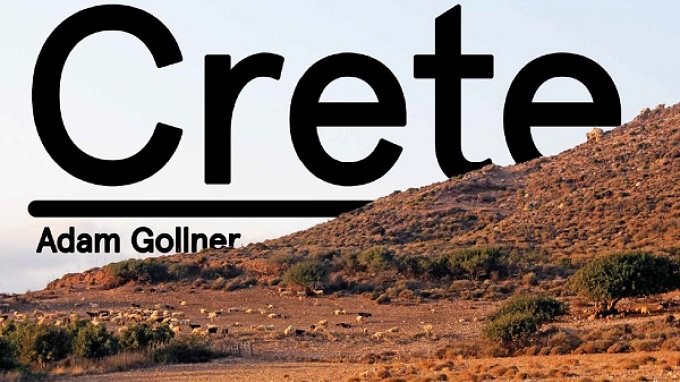
Crete is a pretty cloudless place: it gets 320 days of sunshine each year, so you can see clearly even after dusk. We passed silvery trees bursting with olives, pomegranates, and persimmons. “It’s a generous land—everything grows here,” explained the Cretan winemaker Yiannis Economou, as he drove us through the starlit countryside. He pointed out different examples of edible wild vegetation: dill plants, caper shrubs, fig trees. “Our grass here is actually herbs,” he said.
“This whole island is an herb store,” added his wife, Natassa. To prove it, they pulled over to the side of the road.
We got out to examine the perfumed scrubland. Dusty clusters of oregano, sage, thyme, and rosemary burst from the rocks. I ran my hands through the tufts. They smelled more powerful than any herbs I’ve ever encountered. Apparently, the warm Cretan sunlight allows herbs to develop essential oils that don’t express themselves in hardier climates.
I wanted to take some twiglets with me, but Yiannis politely asked me not to bring them into the car. “The fragrance is so intense it will cause problems,” he said, wincing.
This wasn’t my first experience with wondrous Cretan aromatics. A few years earlier, I’d discovered Economou’s extraordinary wines—wines that smell and taste the way I imagine wine did three thousand years ago. I’d become enamored with the thought that Dionysian traditions might still be alive in the hills of Crete. What else was going on down here, in a place known as “the secret motherland,” the source of Western civilization, the birthplace of Zeus?
After meeting Economou at the Athens Oenorama Wine Fair in the springtime, and then bumping into him again on the volcanic island of Santorini, I received an email from Natassa saying that, as the vice president of the Lasithi Chamber of Commerce, she wanted to invite a Western journalist to discover the region’s wine, olive oil, herbs, dairy products, and honey.
She arranged a trip covering three different towns: Sitia, where she and Yiannis live; Agios Nikolaos, the administrative capital of the region; and Ierapetra, the southernmost town in Europe, where we were presently headed. I would spend a couple of days with locals in each place, in order to get a feel for the infrequently visited agricultural regions of Eastern Crete.
In Ierapetra, we were greeted by our contact person, a middle-aged electronics-store owner with wiry, sparse white hair and eyes so dark it looked like he wore eyeshadow. He didn’t speak English. Natassa and Yiannis stood chatting with his posse, a few guys in tank tops, track pants, flip-flops, and gold chains. From what I could gather, there was some concern about what to show me during my time there. Natassa and Yiannis shrugged and told me not to worry. As we parted, they reassured me they’d see me in a few days.
The wind outside my hotel that night sounded like metal tarps going through a shredder. When sleep finally overcame me, I dreamt I was at a Dionysian revel, surrounded by maenads tearing live goats apart with their hands. They devoured bleeding chunks of the dismembered beasts’ still-pulsating flesh and organs. They clawed at the earth, revealing rivulets of milk coursing through the soil. As we drank from its life force, Dionysus himself arrived in a terror of blinding light. I awoke panting and soaking wet.
That morning, the owner of the electronics store introduced me to an English-speaking local named George, who would be my guide in Ierapetra. George looked like a Balkan version of Robbie Williams: a snub-nosed, forty-something bro with a crew cut and a pit-bull vibe. “We go to greenhouse, yes?” he said, perching his huge Prada sunglasses on top of his forehead.
We spent the next few hours visiting four industrial greenhouses. Each time we stopped, we had at least a glass or two of raki—the local word for grappa, tsipouro, or tsikoudia (not to be confused with Turkish raki, made with anise). After the third greenhouse tour, he turned to me and grinned. “Guess what now?”
“Raki?” I asked wearily.
“Yup.”
It was fine seeing all the plump tomatoes, cucumbers, and green peppers, but on the way to a fifth greenhouse, I suggested we not visit any more greenhouses. “No problem!” he bellowed, doing a U-turn on the highway. “We go to packing facility then.”
“No need to see a packing facility either,” I said firmly. “We have those in North America too. What are the things you only have in Crete?”
“Raki!” He laughed. As we sped toward the sea, he spoke about how there are still shepherds here, how people fire shotguns into the air when they are partying, how Minoan ruins are everywhere in Crete, how the Aegean is full of fish, mollusks, and octopuses. “You go to Athens for the Acropolis, and you go to Santorini or Mykonos for the nightlife,” he concluded, “but reality is here.”
George himself was quite real. He had a bossy, militaristic demeanor, issuing commands like “You go,” or “You get out now,” or, most frequently, “You drink!” His ruggedness mirrored the island itself.
His trademark gag was to add a demeaning jab after a compliment. For example: “Here is Koutsouras, a nice village by the sea… okay, a not-so-nice village.” Or: “This is Dimitrious, a good guy… okay, a not-so-good guy, but still a guy!” George also liked to say things like “Here’s where we’re going—it’s not so cool,” or “This is Niko, he’s nothing special.” When he really admired someone, he’d say, “He is power.”
Although he clearly didn’t admire my limited raki capacity, our conversation about seeing “real things” seemed to sink in. At lunch, George and the electronics-store owner argued about what to do next. At least, I think they argued. Cretans have a tendency to speak loudly and vociferously whether or not they are bickering. Should we go see the two-thousand-year old olive tree? Or should we hit up a bunch of olive oil facilities? Neither option sounded particularly necessary, I interjected, which set them off on another round of shouting that only faded when the food arrived.
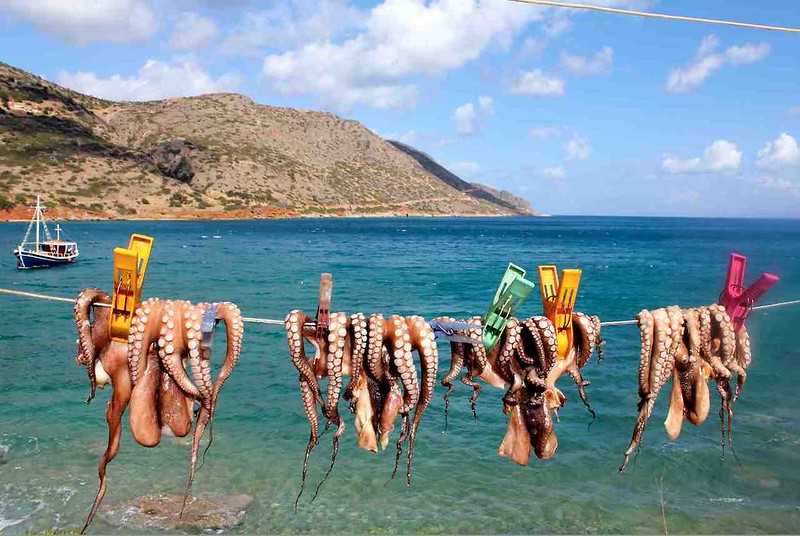
We were in an open-air mezzedopeleion [sic]—a mezze joint—in the shade of a tree covered in green mandarins. From the kitchen came a parade of plates: deep-fried red mullets, eggplants with walnuts, grilled mushrooms, sausages, bitter greens, olives, fava spread, meatballs, feta pies, roasted peppers, smoked pork thighs, various pulses, and the cream from cream-line yogurt. It was the first time I’d tried Crete’s national dish of dakos—hard rusk bread moistened with olive oil and topped with chopped tomatoes, olives, oregano, and mizithra cheese. Everything was ridiculously good.
“It’s the Greek version of a crisis,” managed George, as we were stuffing ourselves.
The electronics guy said something to him that he translated. “Yes, even in times of crisis,” George said, “there’ve never been any problems with food in Crete. Why? Because we grow our own food and we’ve learned how to survive with things like rusk.”
“I think I could eat rusk every day for the rest of my life,” I said.
George smiled and nodded, but his smile faded when I asked about ordering Cretan wine with the meal. “You can have wine, sure, everybody makes their own wine here, but raki is power,” he said, flexing his biceps. When I asked about Dionysus in Crete, he told me that all the old gods are dead.
The waiters brought out an undressed salad and suggested I douse it in olive oil. As I poured out a sizable spill of oil, George tsked. “It must be full,” he lectured, wagging a finger at me.
“How full?” I asked.
“So full that when you drop an olive into it, you hear a splash,” he said. “This is how Cretans born before World War II eat their salads. We all ate this way until doctors told us our cholesterol levels are too high. Bullshit.”
Per capita olive oil consumption in Crete is the highest in the world — around 30 liters per person per year. The average family goes through 150 liters of olive oil annually.
The absurdity of that salad called to mind a word I’d learned in preparation for the trip. It’s always important to learn how to say hello (yia sou) or thank you (efharisto) in whatever foreign land you visit, but it also helps to grip some underground slang. Before I left for Crete, my Greek friend Theo Diamantis, who imports Domaine Economou to Canada, gave me an expression he said would act as an “equalizer” in certain circumstances: mounikapelo. It transliterates to “vagina hat,” and refers to an occasion when something extraordinary happens in the midst of an already chaotic situation. It is a heightened moment in a dramatic storm, the craziness of crazinesses.
This was the mounikapelo of salads, I said. George was impressed. “Mounikapelo, you drink more raki now!”
After lunch, drunk, we all agreed to write off the afternoon.
George and the electronics guy picked me up around eight for dinner. “Where are we going?” I asked. “You don’t ask,” George barked. “You see.”
We got into the car, the two of them in the front, me in the backseat. George rifled through his CD booklet.
“Ela, páme!” he exclaimed, popping in a CD. The first song was the Animals’ “House of the Rising Sun.” The next song was also “House of the Rising Sun,” this time in a reggae version. The entire album, in fact, consisted entirely of renditions of “House of the Rising Sun”—as a mariachi song, as a big-band swing song, as a heavy-metal song, ad nauseam.
“It’s the perfect song,” I gibed, leaning between the two front seats.
George paused to consider it. “Yes,” he agreed.
We zigzagged up a narrow, winding mountain road for about an hour. Due to George’s stop-start, lurching pedal work, and the repetitiveness of the stupid perfect song, I spent most of that time on the verge of throwing up. I sat upright in the back, clutching the seats in front of me, breathing deeply and staring out the front window.
“How you are doing?” he asked me at one point. “You feel sick, yes?”
“Just a little dizzy, that’s all.”
“You are okay,” he informed me. “Strange but good, right?”
After another ten minutes of silent serpentining, he looked back and asked how I liked the road. I nodded wanly. “Good road, right?” he said, looking into the rearview mirror. “I built it.”
The sky had bruised and darkened. We cruised through a small, forsaken hamlet called Oreino. “It means ‘the mountaintop,’” George said, adding that it had been settled centuries earlier by people trying to stay safe from pirate attacks.
As I wondered what could possibly be of interest here, he stopped the car. “You get out now,” he said, pointing. The two of them stayed in, driving off to park.
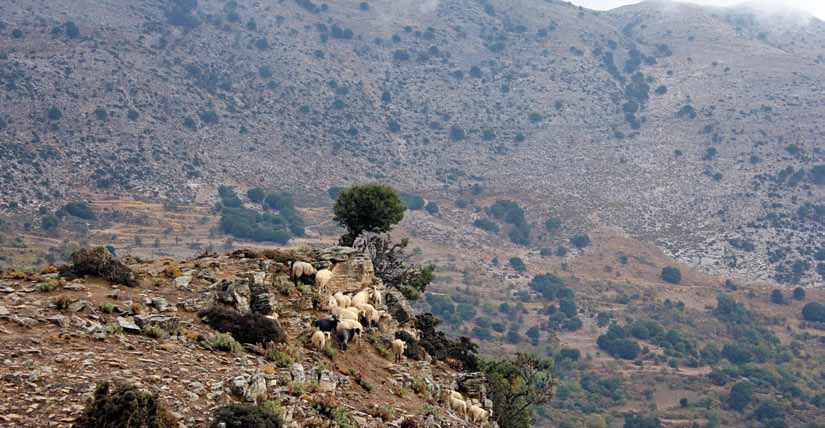
There I stood, alone on the edge of the road at the top of a mountain. I felt seriously confused. Had they brought me all this way just to ditch me? A dirt path led down the hillside into a vineyard. I noticed a light ahead, and walked down the path. Around the corner, carved into the mountainside was a cave. Inside the cave, roots sprouted from earthen walls. In the center of the dirt floor was an old black cauldron set atop a bonfire. Connected to the cauldron was a pipe that passed through a concrete container filled with water. I only realized it was a homemade still when I noticed the faucet dripping distilled alcohol into an amphora at the other side.
There was nobody around, so I strolled through the cave taking stock of this moonshine operation hidden in the mountains. Moths flapped around. Ivy grew along one side of the chamber. Rocks were piled in a corner. A naked lightbulb dangled from a corrugated tin roof. There were two picnic tables and about twenty chairs. As I jotted into my notebook, a couple of wild-haired old men with bright red cheeks arrived.
“Yia sas!” I gushed, shaking hands with them. “What’s going on here?”
Neither of them spoke English, nor did the four little old ladies who came in after them, bearing trays of food. But one of the men bent over to pick up the amphora and poured glasses of clear liquid into white plastic cups. “Raki!” he intoned. We all laughed and drained our glasses and then refilled them and drank again. The man pouring leaned back and made a gesture with his hand implying the gentle smacking of an ass a few times.
The other man, who had white hair combed back over his head like someone from a 1970s Cassavetes film, showed me a hole in the ground where he was cooking potatoes in ash. Some more people strolled in, including a guy with a T-shirt that said "i don’t need sex, the government fucks me every day". Another crazy-eyed wild man took me out back and cut off a bunch of fresh grapes for me to try. Everything felt so unexpected and so abundant.
George materialized. “This is called a kazani,” he explained, pointing at the cauldron. “It is raki-making season. They just finished the wine harvest, and are now making raki out of the grape pomace. The first raki of the season is called protoraki.”
A sweet-looking lady walked in with a large, circular rusk she’d baked herself, covered in the usual dakos toppings. Pretty soon, there were about fifteen people milling around in the cave. “This is the way of traditional harvest meetings,” George said. “Everybody gets together and brings a dish they made. We call it parea— it means ‘togetherness.’”
I looked at him with a mix of disbelief and appreciation. “Efharisto,” I said, sincerely thanking him.
“You wanted reality,” he said.
A bunch more mountain folk showed up. Pretty soon, the table was covered in dishes: anchovies, honey-drenched cheese pies, horta (wild greens), white pomegranates, heavy whole-grain breads, platters of dolmas made with squash blossoms instead of vine leaves. We drank fresh spring water from jugs. We slipped fire-roasted fava beans out of their shells and popped them into our mouths. A yellow pulse spread swimming in a gallon of olive oil and topped with thick slices of raw onions tasted like eating a beach, in the best possible way. There were bitter black olives, dark as night, and sparkling green olives fresh from the trees, not yet brined, but cracked open and doused in sea salt. There were sharp sheep’s-milk cheeses from the village, as well as omathies—a local specialty of rice and herbs inside a boiled baby sheep’s intestine. Someone walked in with a platter of sliced pork belly doused with lemon juice.
“Could it get any better?” George asked, kissing his fingers and then wiping them on his T-shirt.
Most of the men had mustaches and were of a sizable girth. They strutted their embonpoint, joking and feasting. Everyone cheered when an extremely tall, bearded man walked in wearing a leather vest. “Is he a giant?” I asked George, who just laughed in response. When we shook hands, the man’s meaty palm and fingers completely engulfed mine. “He’s tall but still an okay guy,” said George. “Not bad for a giant, mounikapelo.”
The mayor and his entourage arrived. The first thing the mayor said was, “All right, where’s the honey?” The almost-giant laughed uncontrollably. Next to him sat a man who looked like an old Sicilian painting of a demigod. He turned out to be a fiddler, and started wailing on an out-of-tune, busted violin, positively flying over the strings like Apollo himself, accompanied by a jolly, rotund lute player, who was strumming propulsive trance-like rhythms. The songs were primal and beautiful, surprisingly Arabic sounding, like garage-rock snakecharmer folk music.
As the musicians played, people started dancing in circles, stepping nimbly and holding hands. I’d seen touristic recreations of traditional dances before, in places like Borneo and Hawaii, and for a moment I felt nervous that they might be putting on a show for me, that this whole thing was staged, but my apprehensions were unfounded. There wasn’t anything performance like about their display. The villagers danced for their own benefit, the way they’d always danced at harvest parties, unperturbed by my presence.
We kept eating. When my hands grew too dirty with grease, a lady noticed and came over to pour raki over them. I dried them in my hair. I felt so happy that gatherings like this still exist, that folk traditions can persist in the modern age, that I was an outsider participating in it without ruining it. I wasn’t sure if I’d found something Dionysian, but I felt certain that simply being there would grant me months of sanity.
At one point in the night, a jaunty, little Felliniesque man with a pencil mustache, 1950s glasses, and leather loafers sat next to me and put his arm around my shoulders. I must have seemed a bit skittish, so he put his other hand on my leg, slowly circling it the way you’d reassure a horse. His action had the opposite effect, making me wonder if he was actually trying to pick me up. But as he stroked me, he chatted with the owner of the electronics store, who seemed nonplussed by what was happening. The mustachioed man then started massaging my thigh with his index finger and thumb, as though caressing a walnut. When he leaned across to chat with another guy, he rested his elbow on my hip so that his hand cupped my knee. And then he turned away and put his arms around the fat man next to him.
Later, when he left, he shook my hand and bowed. We North Americans aren’t so used to human contact, especially from strangers and older dudes, but when I realized that the man was simply expressing himself the way people in his culture had done for centuries, I felt ashamed. I was embarrassed to have been so defensive, saddened that I was so out of touch with the earth, and grateful to be reminded of human nature’s better qualities there in that cave.
The mayor came over to talk to me.
“Do you eat like this often?” I asked him.
“No,” he shook his head. “Only every ten days or so, during the raki-making season.”
“How long is the raki-making season?”
“A few months.”
I laughed. The mayor wanted to know how Greece was perceived abroad, whether the crisis had given them a bad reputation. “Will we be okay?” he asked.
“Absolutely,” I answered.
He stared at me. “Absolutely yes or absolutely no?”
“Yes!” I clarified.
He nodded.
“It’s a difficult time for sure,” I said, trying my drunken best to sound reasonably convincing, “but judging by how well we’re eating, it seems like you’re doing pretty good right now. If this is what it’s like when you’re in a time of crisis, I can’t even imagine what things would be like in a time of prosperity.”
The mayor, happy with my answer, showed me how to eat snails in the Cretan way. First you pull the snail from its shell. Then you yank off its intestinal sack (“not tasting good”) and dip the snail in cooked wheat berries. Plump as a baby snake, it tasted like a truffled eel. The thought arose that I was probably having the best meal of my life. George looked over at me and started grinning. “You see? Reality.”
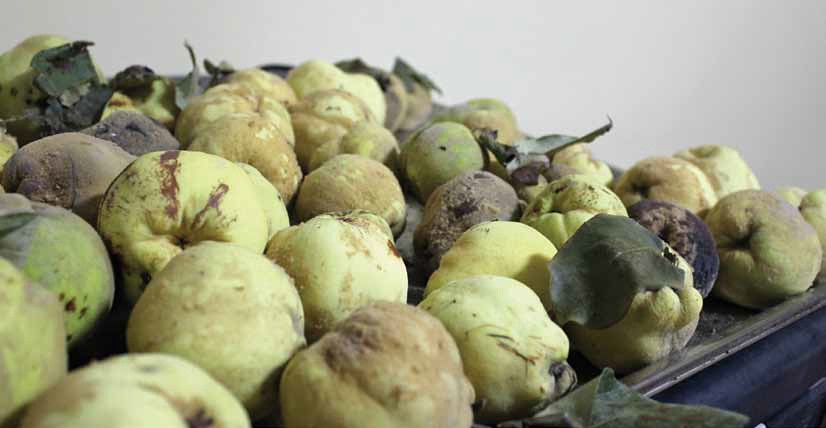
Sitia is a demure fishing harbor with a waterfront full of cafés and bars that wouldn’t be out of place on the Côte d’Azur. But instead of retired one-percenters, this place is jammed with locals—families, cool girls in high ponytails, broke twenty-something rocker guys with Chuck Taylors and bad haircuts. Sitians have dinner out late—the communal raki halls called rakadikos overlooking the bay are full of people eating well after midnight.
Having reconnected with Yiannis and Natassa, I was looking forward to learning more about Cretan wines with them. First we went to Moni Toplou, a fifteenth-century monastery that today produces stellar olive oils and salty wines that combine the richness of Rhône whites with the minerality of Santorini’s assyrtikos. Their reds are interesting too, but nowhere close to those made by Yiannis at Domaine Economou. Then again, he’d worked alongside some of the greats in Barolo, and at Château Margaux, so he’s well versed in world-class wine.
We visited his cellar next, high up in the rugged mountains. His winery is his grandparents’ seventeenth-century home. We sat in the warm courtyard. An arbor hung over our head, filled with indigenous varietals. Sunlight filtered through the grapes, turning them into glowing red orbs and amber capsules.
The next few hours were spent sampling his grappas, vinegars, white wines, red wines, syrupy dessert wines, and other concoctions. We drank them all down with graviera cheese, country bread, and grapes straight off the vine. The flavors rolled over each other like the hills around us.
“Humans have always traveled in search of the best possible things,” Yiannis said. His wines fit into that category—and are certainly worth a journey to find. He produces highly limited quantities and only releases the wines when he believes they’re ready. (The current vintage he’s selling is the 1998.) Occasionally his reds show up on wine lists at places like Per Se, Daniel, and Le Bernardin in New York.
At one point, after a particularly mindblowing glass of aged red liatiko, which tasted like a 1996 Volnay premier cru Clos des Ducs mixed with some deeply old-school rioja, I asked him how he manages to make such sick wines in such an out-of-the-way place. “It’s really simple,” he answered. “You don’t need any great technology, just good grapes, some barrels, a pump.”
He walked me over to some containers of wine just sitting out in the sunshine. “This is how wine was always made here,” he explained. “I do what the Minoans were doing. Even if you don’t know a lot about wine making, you just put crushed grapes in a barrel and it becomes pretty good wine here. All I do is play with oxygen and aging.”
Other Cretans are also referring back to hallowed agrarian ways, he informed me, partly as a result of the national crisis. The following day, we met various examples, from cheese makers to herb gatherers to organic olive oil producers. We started the morning at Si-Mel, a family of honeyworkers. The father, Georgios Savvidakis, didn’t speak English, but I was able to chat with his kind-eyed son, Manos, and his tall, super-stylish daughter, Sofi. She had a charming drowsy quality, as though she had just awoken from a three-thousand-year nap, which heightened her resemblance to the Minoan princesses depicted in paintings unearthed at Knossos palace.
Honey was very important to the Minoans, they both said. “Honey helped to soften the souls of the dead,” Manos explained. “It was a gift to bring to the other world. Mourners at funeral ceremonies would also eat honey.”
The honey did have an otherworldly quality: thick yet elegant, tart and musky. Without question, it outshone any honey I’d ever tasted. I asked Sofi, who had just been in Paris selling the honey, how she describes the taste. “I don’t,” she said. “I just give the person a spoonful so it can explode in his mind.”
“Once someone has tasted our honey,” Manos added, “they can’t have other honeys.”
“But how do you explain what it is like to people?” I persisted. “What words do you use?”
“Magic,” Sofi said slowly. “Magic. Magic.”
Manos watched me writing in my notebook, and said, “You know, writers are like beekeepers. A writer is the thief of knowledge. And we beekeepers, we are honey stealers. In both cases, you have to be a hunter of dreams. Otherwise you cannot dream.”
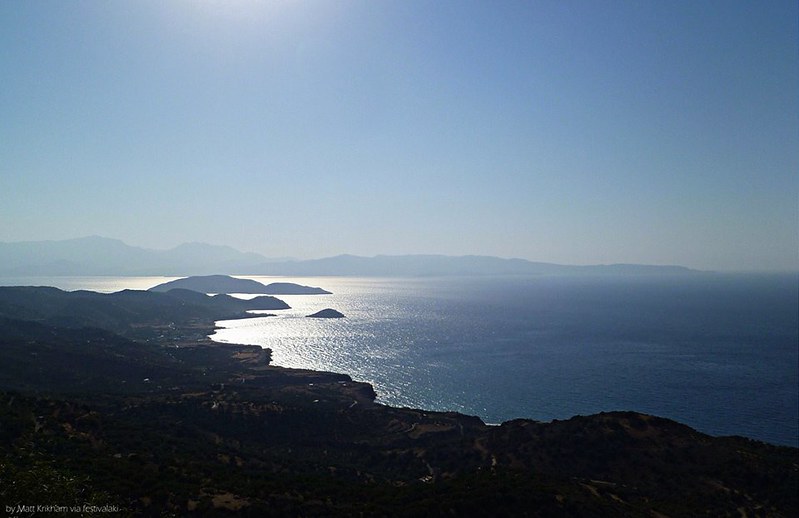
“It’s a wonderful place,” wrote Haruki Murakami, of Crete. “The wind is strong, and the honey is delicious. I love honey.”
If the best honey in Crete is made by the Savvidakis family, the windiest place I visited was the town of Elounda, where the wind howled along the waterfront like a runaway truck. It hurtled over the mountains and shrieked into the crashing waves. Burly, hairy men with enormous chins sat smoking cigarettes inside cafes to escape it.
The area’s main attraction is a ferry that takes visitors to the nearby island of Spinalonga (“The Long Fingernail”), a preserved leper colony. From across the bay, its exotic stone edifices create the impression of a fortress, but the island is more of a prison. From 1903 to 1957, lepers were banished here. Today, it’s a tourist attraction—perhaps the most grim tourist attraction I’ve ever visited. According to the brochure, “it is a place synonymous with suffering.”
My guide for the day, Iason Tavalas, a local journalist, told me, “There is much sadness and misery here.” The lepers’ houses still stand. The day the cure came, people just up and left, leaving plates full of food on tables. Visitors can stroll through hospital disinfecting areas and browse displays of rusty bedpans and bloodcurdling medical equipment. Adding to the forlornness is the maudlin, mournful music that plays on speakers throughout the island. As we stood looking over the concrete-covered graves of the lepers who’d died here, I wondered why anyone would want to visit Spinalonga. “I believe in truth,” Tavalas said. “This is history. That’s why I come here. It’s reality.”
There it was again: reality, that thing we all hope to find in travel, even if it isn’t always pretty or easy. A leper colony is a reminder that reality is both good and bad, pure and tragic, light and impossibly complicated. Reality is composed of as much beauty as illness, as much honey as catastrophe. And that’s why people come to Crete, as George had pointed out. For reality.
After Spinalonga, Tavalas took me to a simple taverna he likes in Vrouhas, a short drive into the hills above Elounda. Its name was Psomi Ke Alati (Bread and Salt). “These words express the friendship of sharing your bread and salt even when you have nothing,” explained Tavalas. The meal began with a regional bread pie called pitopuli. You break off a piece of the hamburger-sized disk of pan-fried dough, and dunk it in sea salt and olive oil. “It’s what kids ate during the war,” the chef explained.
Then we had lamb with bitter greens, hukyan beyerdin (a Turkish-inspired dish of beef with smoky, mashed eggplants), and braised pork with whole chestnuts. The standout dish, however, was a salad made with wild spinach, radicchio, parsley leaves, various herbs, smoked pork, mountain cheese, hazelnuts, walnuts, pomegranates, glazed apricots, oranges, honey, and other delights. “This salad is why I brought you here,” Tavalas said. “This salad fucked up my mind.”
It reminded me of the other salad that fucked up my mind, the olive oil–drowned mounikapelo salad on my first day that had pulled me headfirst into Cretan reality.
Over the next few days, I visited more olive oil farms, hiked up to the cave where Zeus was born, and strolled around the town of Agios Nikolaos. One afternoon, Irini Geredaki, the petite, blonde office manager of the Lasithi Chamber of Commerce took me for a drive into the countryside.
Along the way, we passed people demonstrating in the streets.
“How bad is it?” I asked.
“People are miserable and upset and rioting, but at least here in Crete they have food,” said Irini. “We have agriculture, so we eat, even though we have no money. People with good jobs make 800 euro a month, maybe 1200 euro. How are you going to buy clothes for your kids, or sign them up for guitar lessons or aerobic classes?”
She brought me to Kritsa, a nearby village where a women’s cooperative had formed recently to make local food products: preserves, jams, candied fruit, as well as pies and xinohondros—a pasta-like combination of cracked hard wheat and sheep’s milk dried in the sun. They also had some almonds sitting out on the counter, which tasted as though each one had been infused with bitter almond essence.
“If you like those almonds, you should meet Adonis,” Irini said.
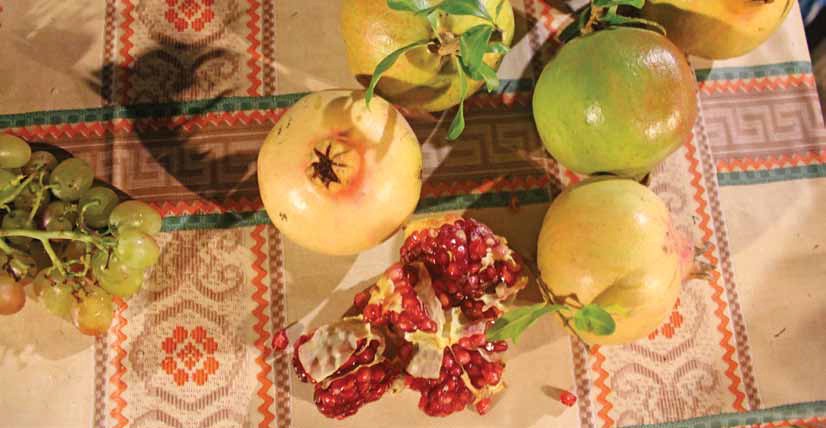
Adonis Gialelakis is a maker of soumada, a traditional almond drink from the town of Neapolis. He decided at the age of fourteen never to drink Coca-Cola again. “It’s unnatural and it has nothing to offer,” he told me. “So I decided to make a new soft drink by rediscovering what our ancestors did.”
Soumada is bitter almond extract blended with syrup and rose water. When stirred into a glass of soda water, it results in a delicious, milky, Middle Easternish elixir. It tastes to me like the sort of thing Scheherazade would’ve sipped in a sundrenched palace courtyard.
“Our society has been polluted,” Gialelakis said over glasses of soumada. “They’ve made it so that it’s cheaper for us to buy our almonds from elsewhere rather than grow our own. There used to be almond groves all around us. In the springtime, these mountains looked like they were covered in snow, there were so many almond blossoms. We were famous for our almonds.”
Today, Gialelakis believes the way forward is by returning to ancient ways. The labels on his bottles of soumada give an account of the mythical Thracian princess Phyllis, who died of a broken heart and was reborn as an almond tree. Gialelakis can relate to the story: he started devoting himself to almonds when he narrowly escaped dying of a terminal heart condition by getting a heart transplant several years earlier. “I know why my heart failed,” he confided. “I was disappointed. I was disappointed with my society. And when you are disappointed, illness can strike. My heart just broke.”
He recounted all this while savoring the sweetness of the soumada. As he spoke, I thought of the honeyworkers, of the mountaintop protoraki party, of Yiannis’s wines, of the everyday poetry of the Cretans. “Crete can be a cruel place, with hard living, but it offers wisdom,” Gialelakis continued. “I know how to never be disappointed. If you work hard and are happy with little, you are immune to disappointment. Don’t have expectations and you will be satisfied.”
When we’d finished our drinks, he brought me up into the hills nearby to show me where the almond trees used to be. We drove, but usually he rides his horse. We came to a little clearing with a babbling stream of spring water. “I want to tell you about the religious feeling of Cretan people,” he said. “We don’t think God is far away. We think God is close to us. In the mountains, you are next to God. We are close to God here.”
We spoke of the Minoans, of how they worshipped nature, of their love of life.
They feasted. They danced in circles. They didn’t seem to fear death. Their god was Dionysus, today best remembered as the god of wine and intoxication, but something far more complicated in Minoan times. He was a god of epiphany: “the god who comes.” In modern Crete, even if the old gods are dead, Dionysus remains close by, always.
For his worshippers, wine was both supernatural and the essence of nature, something that connects the two realms. “Nature overpowering the mind and hurrying it out of a clear self-consciousness (whose most perfect symbol is wine) lies at the basis of all Dionysian creations,” wrote the classicist Károly Kerényi. The god had a simple, if paradoxical, message. We all die; it’s okay to die. Dionysus himself died and yet did not die. Just as grapes are crushed to make wine, all death is a new beginning, a new reality.
On my last day in Crete, I strolled through the ruins at Knossos, thought to have been the mythical site of King Minos’s labyrinth and the Minotaur. How astonishing that this thousand-roomed palace was only uncovered around a hundred years ago. For millennia it lay hidden in the ground. Walking through the silent rubble, I realized that in my own wanderings here, I too had found something, an unexpected thread in the maze: reality.
Adam Gollner, από το αμερικανικό περιοδικό γαστρονομίας Lucky Peach, τεύχος 7, Ιούνιος 2013.

